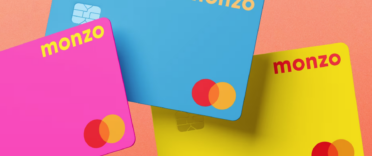
Over a third of people in the UK hold their savings in their current account and don't bother comparing interest rates at all. This could mean they're missing out on £1,000 in extra income each year, according to figures by the Building Societies Association (BSA).
While current accounts can offer competitive interest rates, some high-interest savings accounts offer instant withdrawals with no penalties making them an attractive option for savers. So, if you’re interested in making your money work for you, you might be wondering whether to choose a current account or a savings account.
In this article, we’ll break down exactly how current accounts and savings accounts work, their pros and cons, the different types to consider, where to get the best deals and how to decide which one works best for your financial situation. We'll also look at challenger banks like Starling Bank*, for example.
What is a current account?
A current account is a type of bank account people use to make day-to-day transactions. You may already have a current account. It’s typically the account you use for tasks like:
- Paying bills
- Setting up standing orders and direct debits
- Receiving your wages
How do current accounts work?
Current accounts typically come with a range of features, including:
- A debit card to help you withdraw cash, or make purchases in shops and online
- Overdraft facilities for short-term borrowing; some may be interest-free
- Mobile and online banking to help you manage your account on the go
Some current accounts may come with cashback offers and rewards, or perks like travel insurance. Others offer budgeting tools to help you manage your money more effectively. And, more and more current account providers are starting to offer competitive interest rates as well.
What are the different types of current accounts?
There are lots of different current account choices in the UK. Some types you may come across when exploring your options include:
- Basic current accounts - these accounts are designed for people who can’t meet the requirements for a standard current account and typically don’t offer an overdraft facility
- Standard current accounts - these are the most common types of current accounts and often come with overdraft facilities
- Packaged bank accounts - these types of accounts often come with a monthly fee but may include additional features like travel insurance or breakdown cover
- Joint accounts - these accounts work well for couples who want to share expenses, as they allow multiple people to manage the account and make transactions.
- Student accounts - these accounts are designed for students and may offer features like discounts and interest-free overdrafts
What is a savings account?
Savings accounts, as the name suggests, are designed to help you save money. You’ll usually earn some form of interest on the money you hold in a savings account, too. These types of accounts are relatively popular in the UK. In fact, as of June 2023, around 60% of adults aged between 18 and 64 had a savings account.
Interest rates for savings accounts rose significantly following several consecutive base rate increases since December 2021. But, after a base rate cut in August 2024, some savings rates were slashed. And with more cuts on the horizon, savers may wish to lock in a decent rate while they still can.
How do savings accounts work?
There are lots of different types of savings accounts and they all work slightly differently too. The exact rules will depend on whether you opt for an easy-access savings account, a Stocks and Shares ISA or a notice savings account.
But, here are a few things savings accounts generally have in common:
- Earning interest on your deposits - the exact amount can vary and may come with certain conditions including a minimum balance
- Making withdrawals - some savings accounts allow you to make instant withdrawals whenever you want, while others lock your money away.
- Fees and penalties - some savings accounts may charge penalties if you make too many withdrawals, withdraw before the fixed period ends, or fall below a minimum balance, so it’s important to choose one that meets your needs.
What are the different types of savings accounts?
Some popular savings account options include:
- Instant access savings accounts - these accounts offer immediate access to your money. You'll typically get a slightly lower interest rate in return for this convenience
- Easy access savings accounts - these accounts offer access to your funds but access may be limited. For example, you may be limited to 3 withdrawals per year. These types of accounts typically come with slightly lower interest rates than Notice savings accounts and Fixed-rate bonds
- Notice savings accounts - with these accounts, you’ll need to give notice, ranging from 30 to 120 days, before withdrawing your funds. They typically come with higher interest rates
- Fixed-rate bonds - these accounts “lock” your funds away, usually between 1 year and 5 years. They are typically high-interest savings accounts, but may attract a penalty if you need to withdraw your money early
- Regular savings accounts - with these accounts, you commit to depositing a set amount each month, and in return, benefit from higher interest rates on your savings. However, there are often limits on the amount you can save, set by the provider
- Individual Savings Accounts (ISAs) - these accounts allow you to earn tax-free interest on deposits up to £20,000 per year and so do not form part of your savings allowance
- Lifetime ISAs - these accounts are designed to help you buy your first home or save for retirement. The government tops up your deposits by 25% each year up to a maximum of £1,000
You could use your current account as a savings account too. However, current accounts don’t typically offer the highest interest rates when compared to other types of savings accounts. Additionally, if the money is easy to access, it’s easier to spend. The “out of sight, out of mind” rule applies here.
To find out the best interest rates on offer right now, check out our round-up of the best savings accounts in the UK.
What is the difference between a current account and a savings account?
Current accounts and savings accounts are designed for different purposes. Your current account exists to make everyday transactions easy. Your savings account is designed to help you save money and typically allows only limited transactions.
Current account vs Savings account
The table below summarises the differences between the two types of accounts.
| Current Account | Savings Account |
| Designed for day-to-day transactions. | Designed for savings. |
| Unlikely to pay (much) interest on the balance, although high-interest options are becoming more common | Typically pays interest on the balance; locking your money away for longer may attract a higher interest rate. |
| Offers transactions like direct debits, standing orders, cash deposits and withdrawals, and contactless payments. | Offers limited transactions, typically only in and out of your current account. Some transactions may attract penalties. |
| Offers overdrafts. | Does not offer overdrafts. |
| May come with perks like travel insurance or interest-free overdrafts; this may require a minimum monthly deposit or a fee. | May come with tax-free benefits (ISA); You don’t pay tax on any interest earned within an ISA for deposits up to £20,000 a year. |
So, to sum up:
- Current accounts are great for day-to-day transactions.
- But they don’t typically pay much interest on your balance.
- Savings accounts pay interest on your balance.
- But withdrawing money can come with penalties.
Current accounts and savings accounts do not have to be mutually exclusive. They’re designed to complement each other.
Current accounts could work well for short-term savings goals where you want your money to be easily accessible at all times. Savings accounts may work better for longer-term savings goals where you’re hoping to accumulate a chunk of money and earn decent interest on it, too.
Can you use a savings account as a current account?
Savings accounts can come with higher interest rates, which is why some people wonder whether they can keep all their money there and treat them as current accounts.
While some savings accounts, such as instant access savings accounts, allow you to make withdrawals immediately, many only allow withdrawals to a linked current account. This makes managing tasks like paying bills and setting up direct debits or standing orders difficult.
As such, it’s typically best to have a current account where you can carry out day-to-day transactions with ease. And, if you want to make the most of high-interest savings accounts, you could simply “pay yourself first” by depositing a chunk of your pay in your savings account on payday before you’ve had a chance to spend it.
Things to consider before opening a current account or savings account
Struggling to decide on the type of account you want? Here are a few questions to ask yourself:
- What do you need the account for? If you’re saving for a specific, long-term goal like a wedding, a savings account might work better than a current account
- How much money do you have? If you have a healthy emergency fund and a good chunk of savings, you might want to think about notice savings accounts or fixed-rate bonds that come with higher interest rates.
- Do you need access to the money? If you think you’ll need immediate access to your funds, an instant-access savings account or high-interest current account could work better
Once you’ve decided whether you want a savings account, a current account, or both, you’ll need to look at the options available to you. Here are some things to look for when comparing specific providers.
- Check that the account features work for you - from mobile apps to interest-free overdrafts to cashback and rewards, all bank accounts come with different features. Make sure you’re getting what you want before you apply
- Read the fine print - make sure you understand the terms and conditions of the account you’re signing up for. This can include things like minimum balances, penalties for multiple withdrawals, or interest rate changes. Current accounts that offer an overdraft facility may require a credit check so make sure that you are comfortable with this before you apply
- Check the interest rate - make sure you understand how much (if any) interest you’ll be earning on your money before you deposit it. Many bank accounts offer calculations that tell you exactly how much interest you’re likely to earn if you deposit a certain amount
Where to get the best current and savings accounts
Finding the “best” current and savings accounts depends on what you’re ultimately looking for from an account.
Whether that’s a competitive overdraft facility, an intuitive mobile app, attractive interest rates, or all of the above, you’ll need to do some research to find the right fit.
You’ll also need to make sure you’re eligible for the account and have all the required details and documents ready to go.
How to open a current account
Opening a current account is fairly straightforward these days, and most applications can be completed online. Once you’ve decided on a bank account that meets your needs, you’ll have to check the eligibility criteria and gather the documents you need to apply.
This process tends to be fairly quick with challenger banks like Starling* or Monzo, for instance. All you need is a smartphone and valid photo ID. The applications typically only take a few minutes of your time.
Established high street banks may have more involved application forms and may require you to visit a branch to complete your application. Be aware that as current accounts often come with an optional overdraft facility, the provider may carry out a hard credit check which is likely to leave a mark on your credit file.
If you are looking to switch to a new current account, then check out our article 'Best current account switching offers'
How to open a savings account
The process for opening a savings account is similar to the process for opening a current account. If you already have a current account with a bank, you may be able to open a savings account via your mobile app in just a few minutes.
However, your current account provider might not have the best savings account deal out there. So, if you’ve chosen a different savings account provider, you’ll need to go through their application process.
Many applications can be completed online in minutes. You may need to provide information like:
- Your name
- Your address
- Your date of birth
- Your nationality
- Your tax residency status
Your provider may also ask you to link a current account so you can make withdrawals and deposits to your savings account.
Further reading
For further information on the best current and savings accounts check out the links below:
- Best UK current accounts
- Best high interest UK current accounts
- Best app-only bank account in the UK
- Best packaged bank account
- Best current account switching offers
- Compare the best business bank accounts in the UK
- Best business savings accounts in the UK
- Best savings accounts in the UK
*Links with a *beside them are affiliate links. When you use these links, Money to the Masses may receive a small fee, which helps keep Money to the Masses free to use. The following links can be used if you do not wish to help Money to the Masses or take advantage of any exclusive offers - Starling Bank





